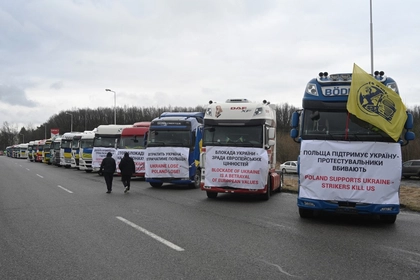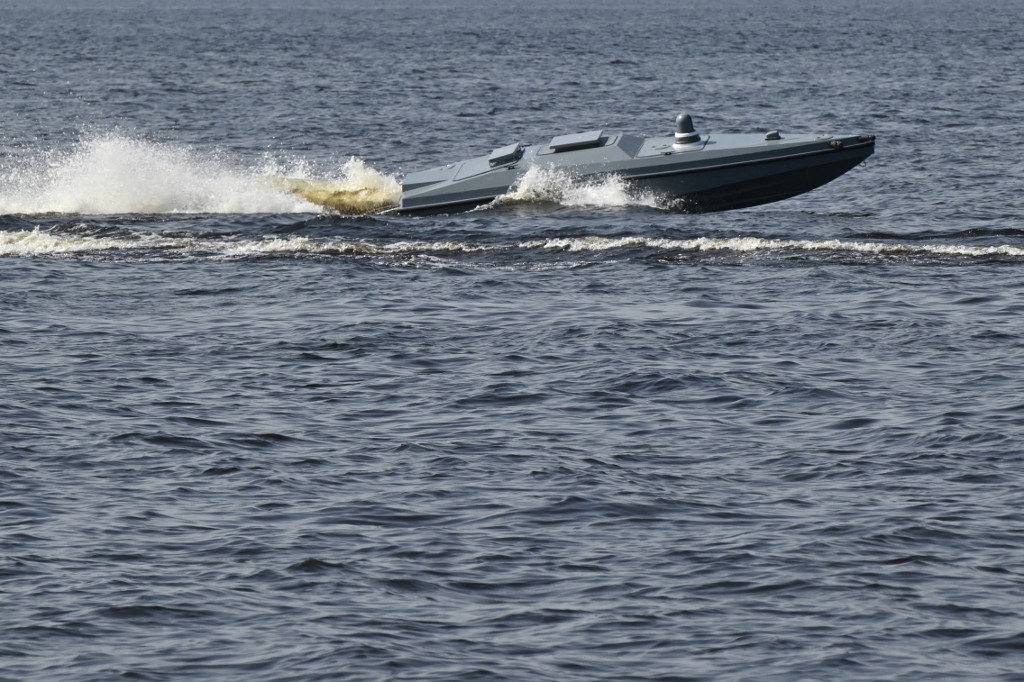Russia prepared target lists containing more than 160 sites in Japan and South Korea in the event of a major war, according to leaked documents.
The Financial Times (FT), which reportedly obtained the cache of 29 secret Russian military files from “Western sources,” said the war plans contained within came from 2013-2014 and bore the insignia of Russia’s Combined Arms Academy, a training college for senior officers.
JOIN US ON TELEGRAM
Follow our coverage of the war on the @Kyivpost_official.

FT said “much of the presentation” centered around strikes using Russia’s Kh-101 non-nuclear cruise missile, intending to halt the “regrouping of troops in areas of operational purpose” in the Asia-Pacific sector should a war with NATO breakout.

Breakaway Moldovan Region Shuts Almost All Industry Amid Energy Crisis
The publication said the leaked materials “largely focused on training officers for potential conflict on the country’s eastern frontier from 2008-14” but asserted their relevancy considering Moscow’s ties with Beijing and Pyongyang’s troop deployments in Russia’s war against Ukraine.
Who is on Russia’s Asia hit list?
Of the sites listed, 82 were military targets such as the central and regional command headquarters of the Japanese and South Korean armed forces, radar installations, air bases and naval installations, FT said.
However, the remaining targets are of a civilian nature, including roads, tunnels and power plants – even nuclear ones.
“The remainder are civilian infrastructure sites including road and rail tunnels in Japan such as the Kanmon tunnel linking Honshu and Kyushu islands. Energy infrastructure is also a priority: the list includes 13 power plants, such as nuclear complexes in Tokai, as well as fuel refineries.
“In South Korea, the top civilian targets are bridges, but the list also includes industrial sites such as the Pohang steelworks and chemical factories in Busan,” FT reported.
FT said one of the slides also contained Russian estimations of the forces needed to breach two South Korean command-and-control bunkers. Another slide reportedly contains “precise measurements of target buildings and facilities” of a Japanese radar base in Okushiritou.
Then vs. now
Though FT asserted the war plans’ relevancy despite their age, it added that the war in Ukraine had shown Moscow’s overconfidence in its weaponry 10 years ago.
The hypothetical mission against Okushiritou has an 85% chance of successfully destroying the targets, according to the documents, which FT said was overstated considering the actual performance of the Kh-101 missiles seen in Ukraine.
Fabian Hoffmann, a doctoral research fellow at the University of Oslo, told FT that Moscow overestimated the Kh-101’s accuracy and stealth capabilities.
“The Kh-101 features an external engine, which is a common characteristic of Soviet and Russian cruise missiles. However, this design choice significantly increases the missile’s radar signature,” Hoffmann said.
“For missile systems with limited yield that rely on pinpoint accuracy to destroy their targets, this is an obvious problem,” he added.
What’s the implication?
Experts told FT that the documents highlight the shared security between Europe and Asia, all the while demonstrating Moscow’s concerns over the security of its eastern flank.
William Alberque, a former NATO arms control official now at the Stimson Center, told FT that “European and Asian theatres of war are directly and inextricably linked,” as shown by the documents and the recent 12,000 troops Pyongyang sent to aid Russia’s invasion of Ukraine.
“Asia cannot sit out conflict in Europe, nor can Europe sit idly by if war breaks out in Asia,” Alberque said.
“In a situation where Russia was going to attack Estonia out of the blue, they would have to strike US forces and enablers in Japan and Korea as well,” he added.
Michito Tsuruoka, an associate professor at Keio University and a former researcher at Japan’s Ministry of Defense, told FT that war plans highlighted concerns for Tokyo as a war with Russia could come with little warning.
“In a conflict with North Korea or China, Japan would get early warnings. We might have time to prepare and try to take action. But when it comes to a horizontal escalation from Europe, it will be a shorter warning time for Tokyo and Japan would have fewer options on its own to prevent conflict,” Tsuruoka told FT.
Tsuruoka added that Russia “is not often seen as a security threat by ordinary Japanese,” which can be another cause for concern.
You can also highlight the text and press Ctrl + Enter






